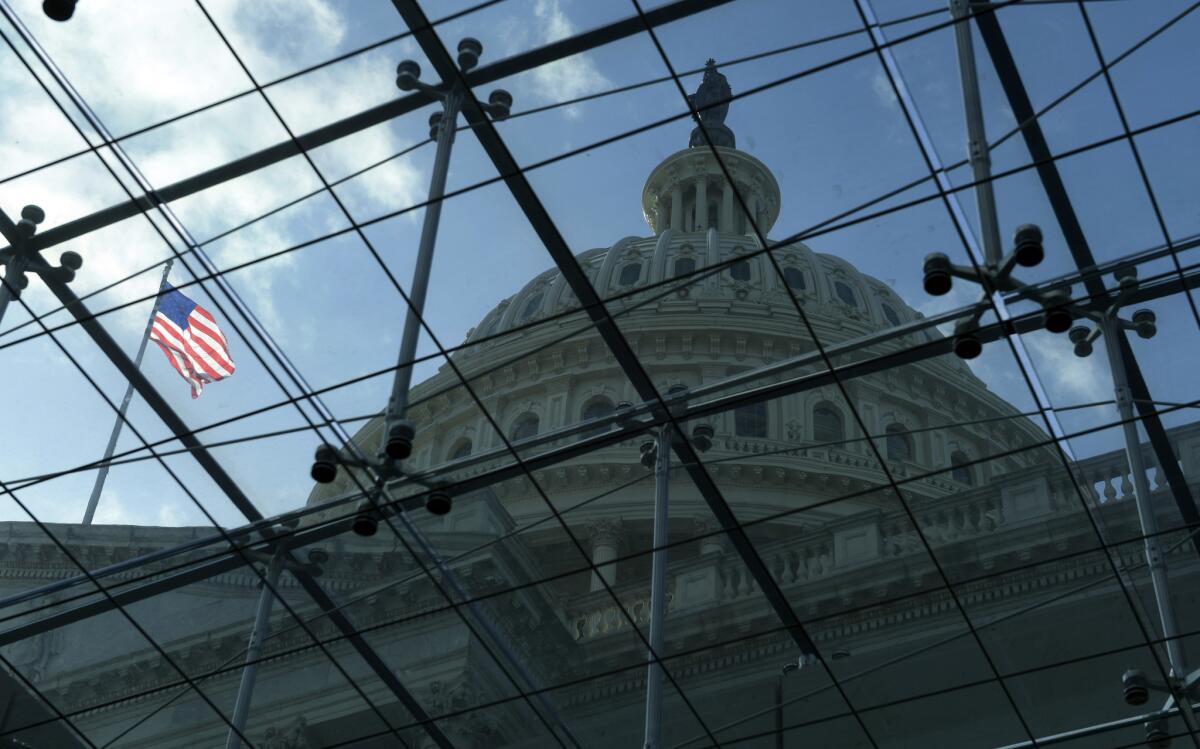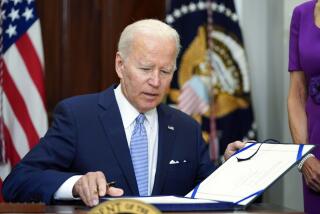Federal spending deal funds gun safety research, increases wildfire spending

WASHINGTON — With funding for the federal government set to expire this weekend, the House took the first step Tuesday in approving a deal between congressional leaders and the White House on a $1.4-trillion spending package that would bolster election security, increase funding for fighting wildfires and, for the first time in more than 20 years, pay for gun safety research.
“I’m pleased that we have reached a bipartisan agreement that will keep government open, provide the certainty of full-year funding, and make strong investments in key priorities for American communities,” said Rep. Nita M. Lowey, the New York Democrat who leads the powerful House Appropriations Committee. “With higher spending levels in line with the bipartisan budget agreement, we are scaling up funding for priorities that will make our country safer and stronger and help hardworking families get ahead.”
The measure comes nearly three months after the start of the fiscal year, after months of contentious negotiations over spending priorities, set against the backdrop of House Democrats’ effort to impeach President Trump. The deal would ensure that the government stays open through the remainder of the fiscal year, which ends Sept. 30, 2020, while also enacting disparate initiatives and rejecting many of the cuts Trump had proposed.
The House approved two bills incorporating the deal by rare bipartisan votes of 297-120 and 280-138, less than 24 hours after their texts were made public. The legislation will now go to the Senate, which is expected to pass the measures and send them to Trump for his signature.
Bills to fund the government at the end of the year have come to be known as “Christmas trees” because members of Congress attach pet projects, or “ornaments,” to the bills before they pass.
Big or small, these add-ons have become even more important in recent years. After Congress ended so-called spending earmarks more than a decade ago amid scandals involving Republican members, lawmakers in a deeply divided Congress grasp for accomplishments to show their constituents they are getting things done. The add-ons increase the spending bill’s size and cost while the details are often opaque, even to the lawmakers who approve them.
Among the many provisions included is one that California and other Western states still recovering from destructive wildfires have sought for years. It ends a long-standing practice known as “fire-borrowing,” which required the U.S. Forest Service to raid its other funds whenever it ran out of money to pay for fighting wildfires.
Faced with increasingly long and costly fire seasons, the Forest Service often wound up strapped for cash as a result of a firefighting budget that amounted to a fraction of what it actually cost to fight fires. With no choice but to continue paying firefighters, the agency used money that was supposed to pay for research, maintenance of national forests and preventive measures such as prescribed burns.
“It would just eat up all of their resources,” said Jonathan Asher, a government relations manager at the Wilderness Society. “This issue impacted even people like biologists who would get funding to go out and study an endangered species or a critical habitat, and then all of a sudden, they would get into the month of July and be pulled off of it.”
If Congress approves the spending package, the Forest Service will be able to withdraw money from an emergency fund at the Federal Emergency Management Agency during especially severe fire seasons, just as the government does for hurricanes, tornadoes and earthquakes. The measure also increases funding for wildfire fighting by $1.9 billion over the previous year.
Lawmakers’ agreement denied the president a victory in his fight for a massive increase in border wall funding. Although the White House pressed for more spending, the end result maintains existing funding levels at nearly $1.4 billion for the U.S.-Mexico border, while giving the administration the leeway to pull money from other accounts.
This is far short of the president’s demands and what his administration would actually need to build the “big, beautiful wall” he campaigned on. The option to transfer money has also been complicated in recent days by a federal judge’s decision barring the president from using several billion dollars in military construction funds to pay for wall construction.
The spending legislation includes a measure that would raise the legal age nationwide for buying tobacco products to 21 from 18. (California did this three years ago.)
Another would repeal several taxes that were put in place to pay for Obamacare’s expanded health benefits and have been vigorously opposed by the healthcare industry since. They include the so-called Cadillac tax on expensive, generous health insurance plans, as well as a tax on medical devices.
Democrats won $25 million to fund research on gun violence, a major accomplishment after decades of scarcely any federal investment in understanding one of the leading causes of death in the country. The spending deal directs the money to the Centers for Disease Control and Prevention and the National Institutes of Health.
Federal funding for gun violence research dried up in the late 1990s, after gun lobbyists pressured a Republican-controlled Congress to approve legislation, known as the Dickey Amendment, that barred the CDC from spending money “to advocate or promote gun control.” Although that didn’t explicitly ban research into gun violence, when coupled with budget cuts, it had a chilling effect on the field.
Over the course of the last two decades, the federal government has essentially walked away from efforts to investigate which policy changes or preventive measures would reduce gun deaths.
Some of this work has continued at universities or at the urging of state governments. In the aftermath of the San Bernardino massacre in 2016, the California Legislature decided to start funding gun research that the federal government wouldn’t support.
Attempts to revive federal spending took on a new sense of urgency in the aftermath of recent mass shootings.
The bills also include $425 million in new funding for election security grants — money that Democrats fought for in the aftermath of Russia’s meddling in the 2016 election, and evidence of its continued interference.
The money would be used to prevent cyberattacks and to help states and local governments strengthen their election infrastructure against possible digital interference in the 2020 election. This could include replacing old voting machines, particularly in states that still rely on machines that don’t print a paper record of each vote and thus leave no way to check if a digital tally has been sabotaged.
Proposals to expand federal tax credits for electric vehicles did not make it into the final package, despite support from Democrats and a handful of Republicans, including Sens. Lamar Alexander of Tennessee and Susan Collins of Maine. The popular tax break, which offered $7,500 to consumers who purchased an electric vehicle, has been credited with lowering the cost of electric cars and supporting an industry that employs many Californians in research and manufacturing.
The credit was especially important to automakers including Tesla and General Motors, but Trump has opposed it for years.
The White House also dashed the hopes of supporters of solar energy. A proposal to extend tax credits for solar panels, which will become more expensive beginning in 2020, also failed.
More to Read
Get the L.A. Times Politics newsletter
Deeply reported insights into legislation, politics and policy from Sacramento, Washington and beyond. In your inbox three times per week.
You may occasionally receive promotional content from the Los Angeles Times.











